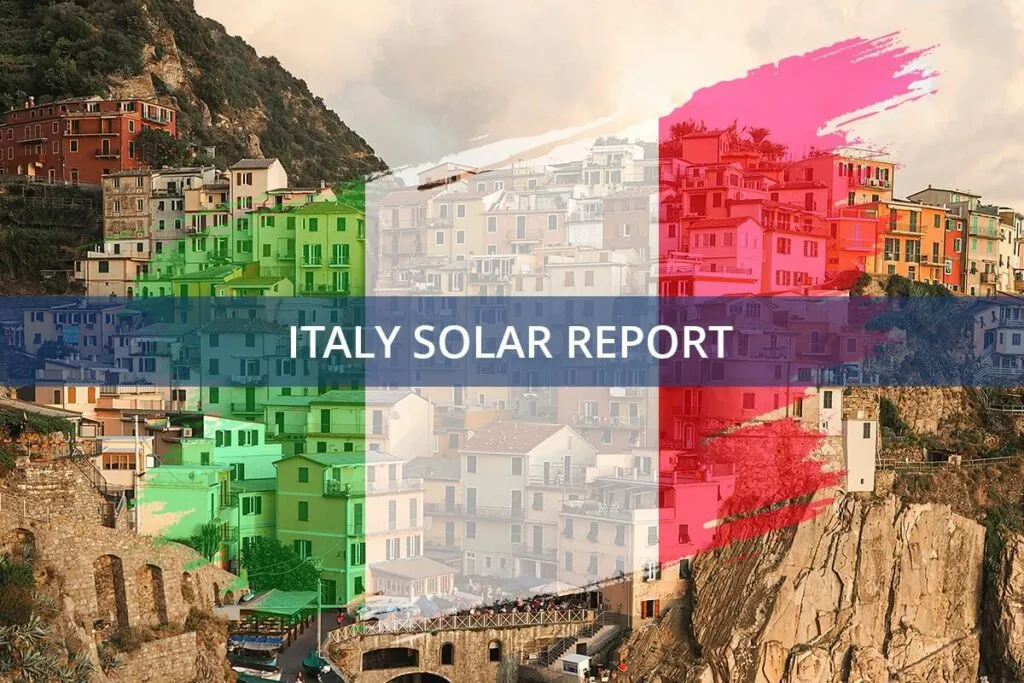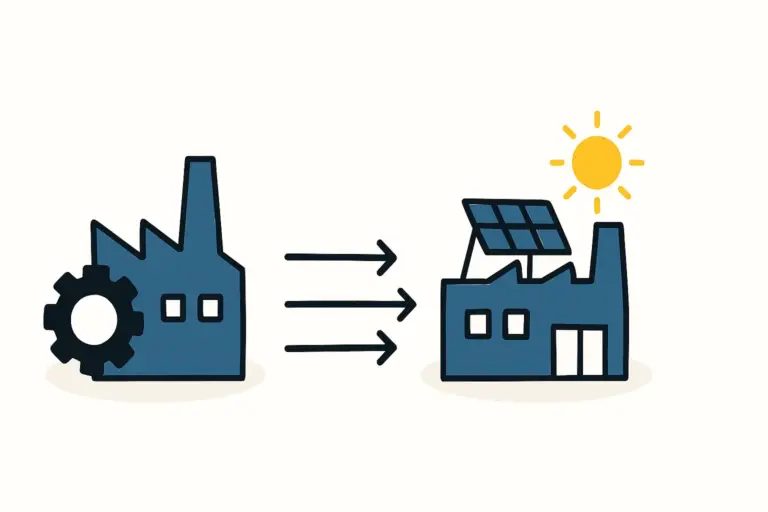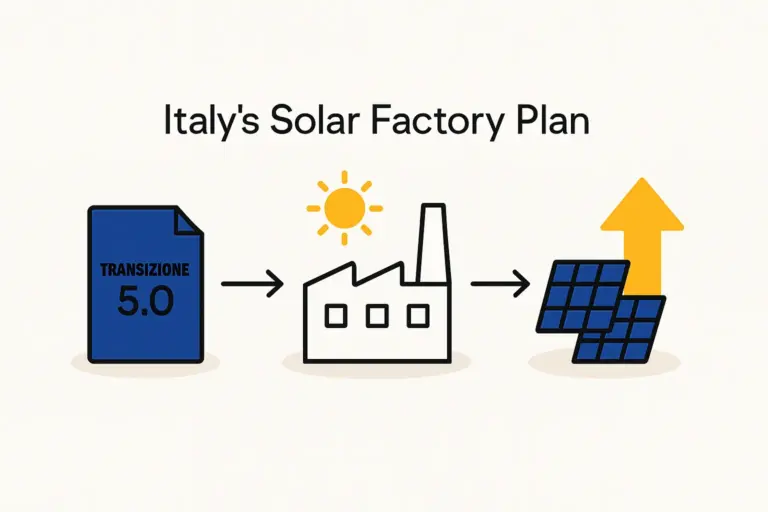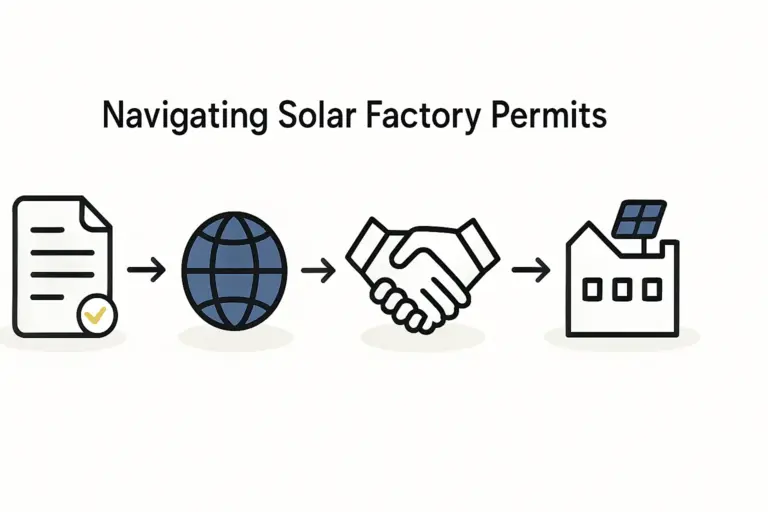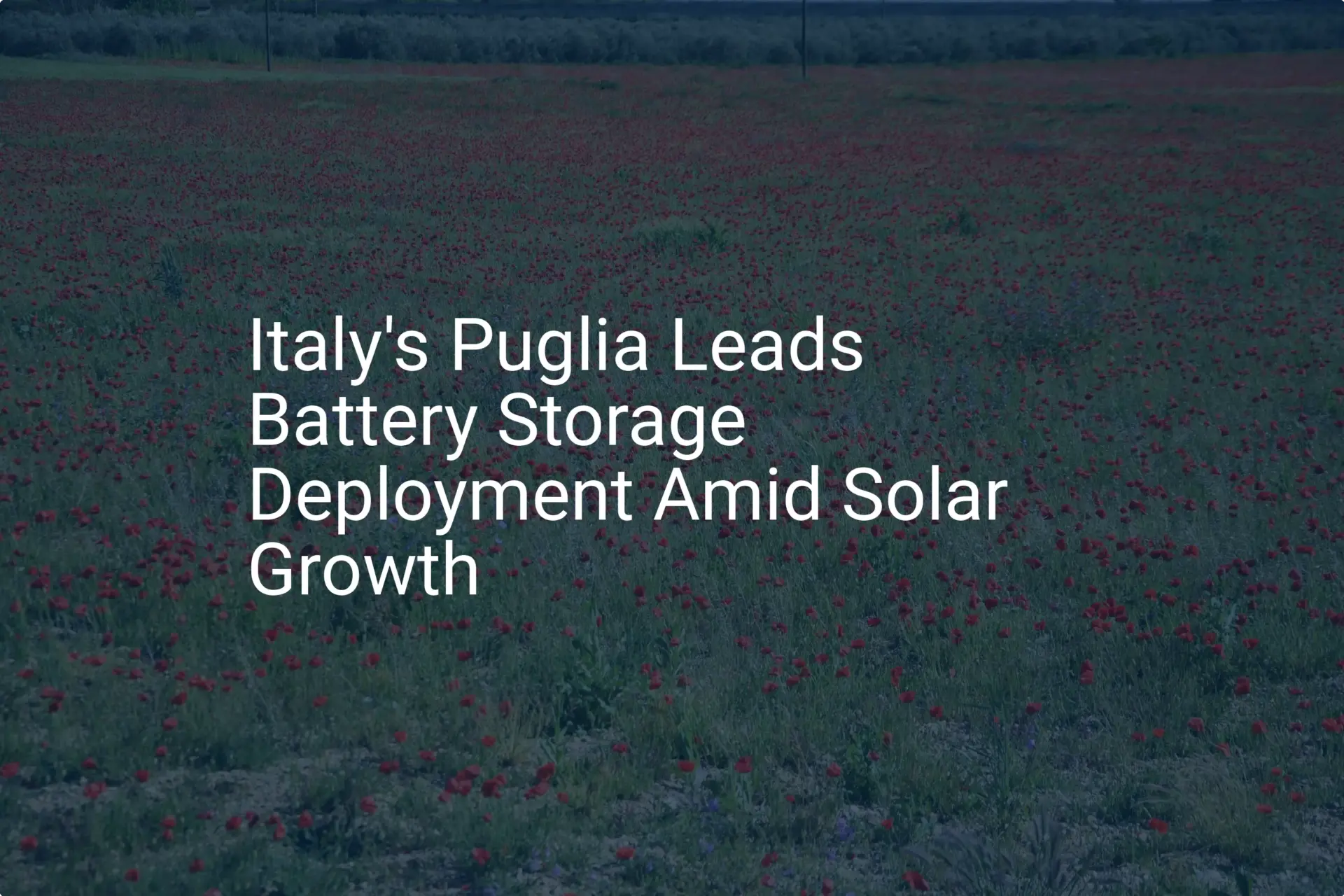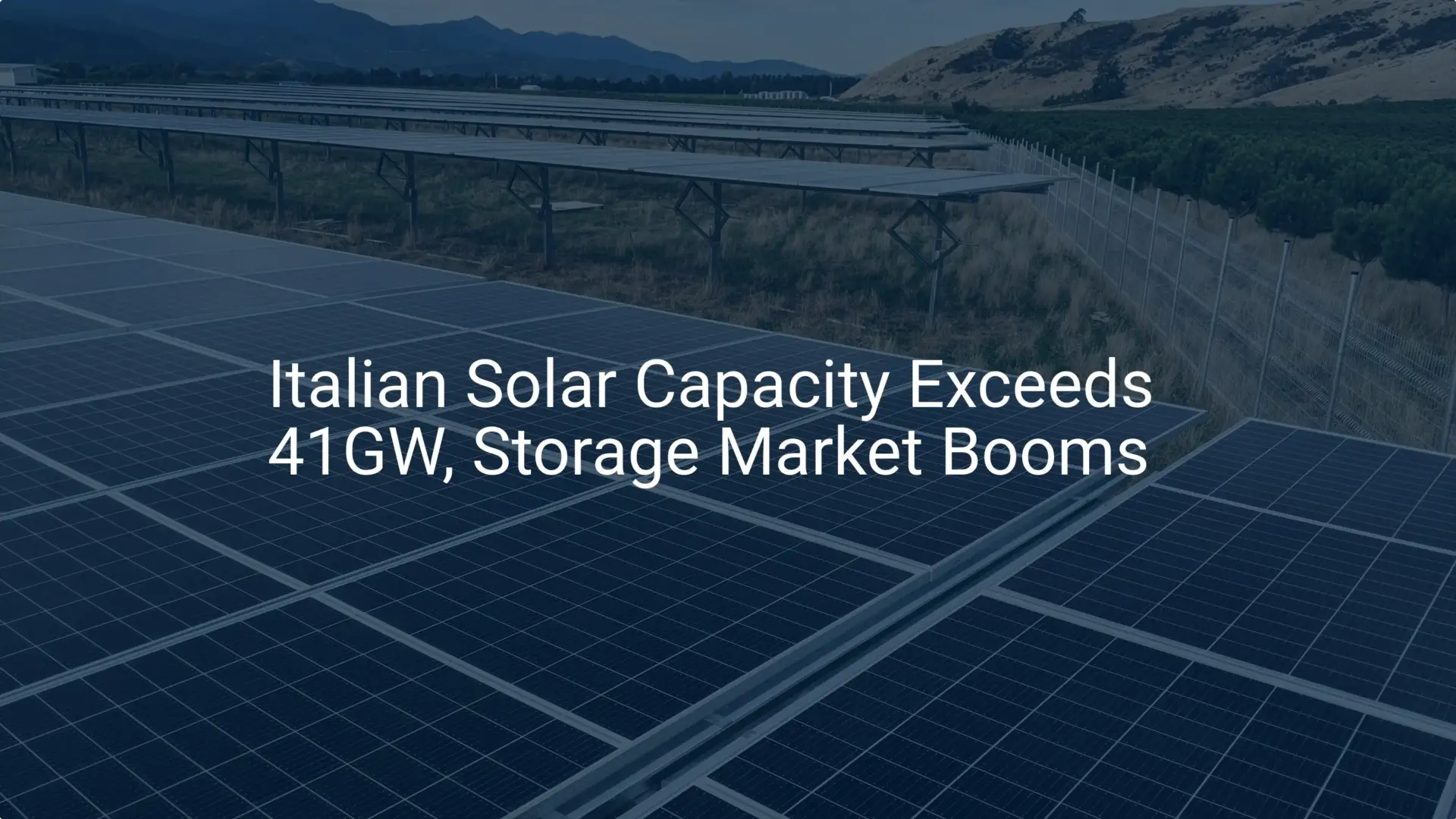An entrepreneur planning to enter the solar manufacturing market often faces a significant challenge: how to differentiate their product in a global landscape dominated by high-volume, low-cost producers.
While competing on price alone is a tough proposition, a powerful alternative lies in leveraging a country of origin known for quality, engineering, and reliability. For solar modules, the ‘Made in Italy’ designation has emerged as a valuable commercial and regulatory asset, offering a clear path to premium positioning and enhanced market access.
This article explores the strategic value of ‘Made in Italy’ certification, outlining the requirements for the label and the commercial advantages it creates for exporting solar modules, both within the European Union and to international markets.
The Resurgence of European Solar Manufacturing
For years, the global solar manufacturing landscape was heavily concentrated in Asia. However, a strategic shift is underway. Recognizing the critical importance of energy independence and supply chain security, the European Union has launched ambitious policies designed to bring manufacturing back to the continent.
At the forefront of this movement is the Net-Zero Industry Act (NZIA). This landmark legislation sets a clear target: by 2030, the EU aims to produce at least 40% of its annual deployment needs for key net-zero technologies, including solar photovoltaic panels. This initiative is not merely a political statement; it is backed by streamlined permitting processes and financial incentives, creating a fertile environment for new manufacturing ventures. Italy, with its strong industrial base and engineering heritage, is positioned as a key hub in this European manufacturing revival.
Why ‘Made in Italy’ Carries Commercial Weight
The “Made in…” label is a powerful signifier of quality, and few carry as much weight as ‘Made in Italy’. Traditionally associated with luxury goods, high-performance automotive engineering, and precision machinery, this brand perception extends directly to high-tech industrial products like solar modules.
For customers worldwide, this label implies adherence to stringent European quality standards, advanced production techniques, and long-term reliability. In a market where buyers are increasingly concerned about product longevity and performance, a ‘Made in Italy’ solar panel can command a premium and build trust more quickly than an undifferentiated alternative.
This perception of quality is not just marketing; it is rooted in a highly controlled solar module manufacturing process that prioritizes durability and efficiency. This differentiation is particularly impactful in markets across the Middle East, Africa, and the Americas, where European engineering is held in high regard.

The Regulatory Framework: Navigating the Certification Process
Achieving the ‘Made in Italy’ designation is not a simple matter of branding. It is a formal certification governed by the EU’s Union Customs Code (UCC), ensuring the label is reserved for products that have undergone significant transformation within the country.
Step 1: Establishing Substantial Transformation
The core principle of the certification is that the product must have undergone its “last substantial working or processing” in Italy. For a solar module, this means that the simple assembly of pre-fabricated components is not enough. Key value-adding manufacturing stages—such as connecting the solar cells into strings (stringing), laminating the panel layers, attaching the aluminum frame, and fitting the junction box—must occur at the Italian factory. This ensures the fundamental character and quality of the module are defined by the work performed in Italy.
Step 2: Documentation and Traceability
To verify the country of origin, Italian authorities require meticulous documentation. The manufacturer must maintain a complete and traceable record of the entire production process. This includes the Bill of Materials (BOM) detailing every component, production logs tracking each module’s journey through the factory, and supplier declarations for key inputs. This rigorous documentation not only satisfies regulatory requirements but also lays the foundation for robust quality control systems. A comprehensive solar panel manufacturing business plan must account for these procedural and documentation overheads from the outset.
Step 3: Engaging with the Italian Chamber of Commerce
The official body responsible for issuing Certificates of Origin is the local Italian Chamber of Commerce (Camera di Commercio). A manufacturer must submit a formal application supported by the extensive documentation from Step 2. The Chamber reviews the evidence to confirm that the ‘substantial transformation’ rule has been met before granting the certification. This formal, third-party validation is what gives the ‘Made in Italy’ label its legal and commercial authority.
Market Access and Financial Incentives
The benefits of securing ‘Made in Italy’ certification extend far beyond brand perception, unlocking tangible commercial and financial advantages that can significantly impact a new venture’s success.
Unrestricted Access to the EU Single Market
Perhaps the most significant benefit is unfettered access to the entire EU Single Market. A solar module certified as ‘Made in Italy’ is considered a European product and can be sold in any of the 27 member states without facing import tariffs, customs duties, or complex cross-border trade barriers. This access is a crucial advantage for any business planning to serve the rapidly growing European solar market. Entrepreneurs considering starting a small solar panel factory find this market access a compelling reason to locate within the EU.
Eligibility for EU and National Subsidies
With policies like the NZIA in place, the EU and its member states are actively promoting domestic manufacturing through subsidies, grants, and favorable financing terms. A certified European producer is often first in line for these support mechanisms. These incentives can help offset initial capital expenditures, fund research and development, and improve the overall financial viability of the manufacturing plant.
Enhanced Bankability and Project Financing
For developers of large-scale solar farms, the origin of the components is a key factor in risk assessment. Projects built with certified, EU-made solar panels are often considered more ‘bankable’ by financial institutions. Lenders view European manufacturing standards as a guarantee of quality and performance, which reduces investment risk. This can lead to more favorable financing terms and easier access to capital for projects utilizing ‘Made in Italy’ modules.

A Practical Perspective from Turnkey Projects
Experience from J.v.G. Technology GmbH’s turnkey projects shows that the decision to pursue ‘Made in Italy’ certification should be made right at the start of the planning phase. It is not an afterthought but a strategic choice that influences the entire factory setup.
This decision directly impacts the selection of solar panel manufacturing equipment, as the machinery must be capable of performing the ‘substantial transformation’ processes required by the regulations. It also dictates the factory layout, workflow design, and the implementation of supply chain tracking systems. Building the facility with certification as a primary goal from day one ensures a seamless and efficient path to compliance. The structured guidance available through platforms like pvknowhow.com can help new investors integrate these requirements into their initial business and technical planning.

Frequently Asked Questions (FAQ)
What is the primary requirement for ‘Made in Italy’ certification?
The core requirement is “substantial transformation.” This means the key manufacturing processes that define the final product—such as cell stringing, lamination, and framing—must be performed within an Italian facility.
Does using imported solar cells disqualify a module from ‘Made in Italy’ status?
Not necessarily. The Union Customs Code focuses on where the final, substantial manufacturing work occurs. Manufacturers often source raw components like solar cells globally. As long as these components are transformed into a finished solar module in Italy, the product can still qualify.
How long does the certification process typically take?
The certification itself is an administrative step that occurs once the factory is operational and can demonstrate its production process. The true timeline is integrated into the factory setup and commissioning, which can take 6-12 months. It is part of the operational readiness plan, not a standalone process.
Is ‘Made in Italy’ recognized outside the European Union?
Yes. The ‘Made in Italy’ brand is a globally respected mark of quality and engineering excellence. For buyers in markets like the Middle East, North America, or Africa, it serves as a powerful differentiator that can justify a price premium and build confidence in the product’s long-term performance and reliability.
Conclusion: A Strategic Choice for Global Competitiveness
In the competitive global solar market, the ‘Made in Italy’ certification offers a distinct and powerful advantage. It is more than just a label on a product; it is a strategic business tool that unlocks unrestricted EU market access, grants eligibility for financial incentives, and builds a premium brand trusted by customers and investors worldwide.
For an entrepreneur or business professional looking to establish a solar module manufacturing operation, choosing a location and strategy that supports this certification can be a foundational decision. It shifts the business model from competing on cost to competing on quality, reliability, and long-term value—a far more sustainable path to success.

